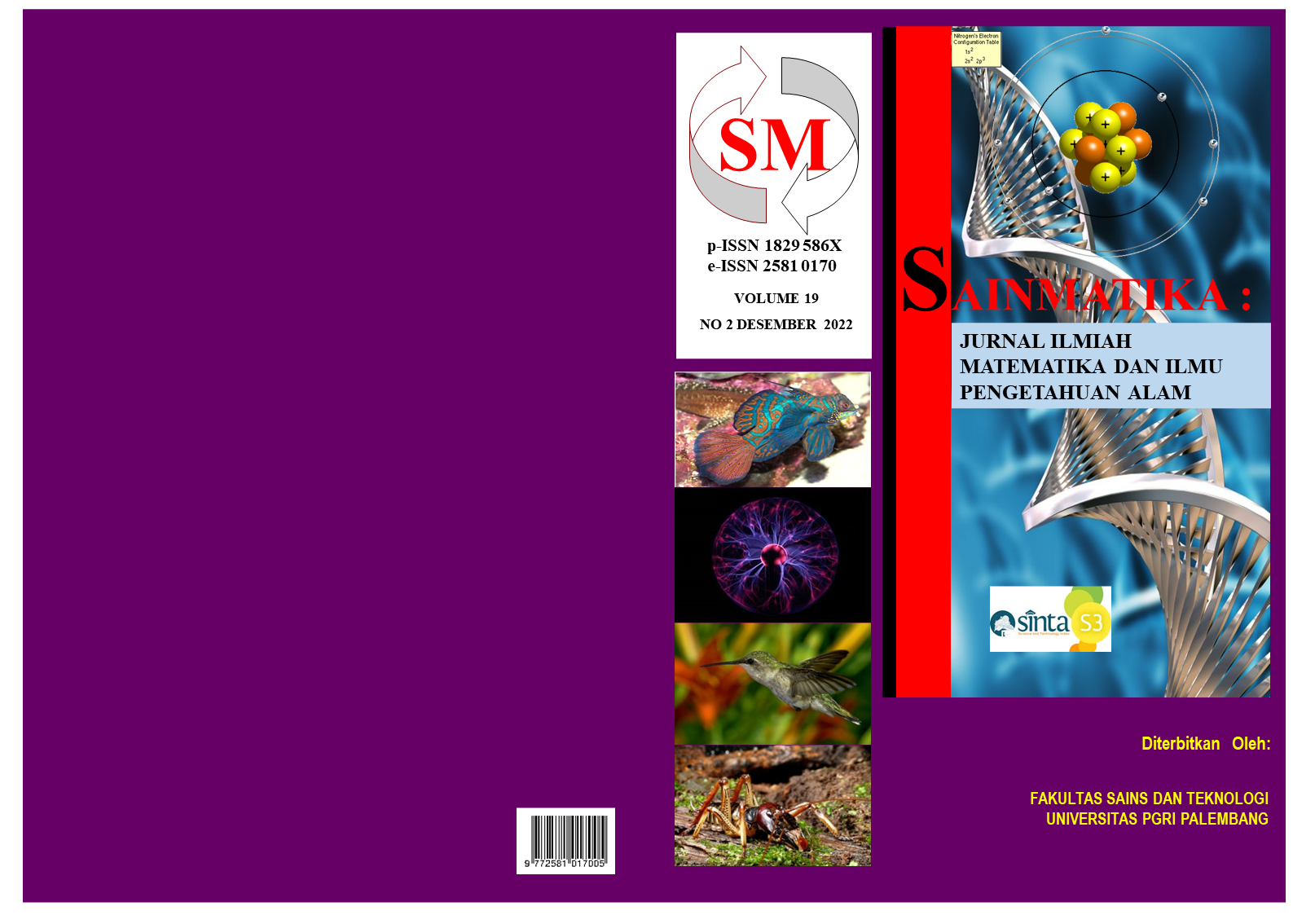Pemanfaatan Elektrolit Air Laut Sebagai Sumber Energi Listrik Baterai Dengan Elektroda Tembaga - Aluminium
DOI:
https://doi.org/10.31851/sainmatika.v19i2.9583Keywords:
battery, seawater, salt_water, electrolyte, microporous_separatorAbstract
Electrical energy demand is increasing from time to time. Most sources of electrical energy come from petroleum, natural gas, and coal. Even though this energy source is non-renewable, the amount is dwindling, and it produces carbon emissions that can cause the greenhouse effect. Indonesia is an agrarian country whose territory is more than seventy percent of the ocean. Natural resources: seawater and beach sand are certainly very abundant. In this study, this natural material is used by researchers as a source of electrical energy in the form of a battery. As far as researchers know, research on the manufacture of battery cells by direct use of natural resources does not yet exist. Much is preliminary research on the extraction of basic materials so almost all research on batteries costs a lot of money by methods that are not simple. Therefore, this research is very important, because it uses a simple assembly method which is certainly time-saving and cost-effective. The battery array made consists of [Cathode || Electrolyte + Microporous Separator || anode]. The seawater-salt water battery cells made successfully turn on the lights, both LED lamps, and home light bulbs, with a large current generated of 13.56mA. The voltage produced by a battery cell is 1.31 V, while the series voltage for 2-3 batteries is 2.55 V and 3.6 V, respectively.References
Adriani. (2020). Pemanfaatan Air Laut Sebagai Sumber Cadangan Energi Listrik. Vertex Elektro, 12(02), 22–33.
Anisa, Z., Apprianda, A., Novianto, H., & Rachman, I. (2021). Micro-Hydro Power Plants (MHPP): Technical and analytical studies in creating experimental learning media for physics students. Momentum: Physics Education Journal, 5(1), 53–64. https://doi.org/10.21067/mpej.v5i1.4876
Anisa, Z., & Zainuri, M. (2020). Synthesis and Characterization of Lithium Iron Phosphate Carbon Composite (LFP/C) using Magnetite Sand Fe3O4. The Journal of Pure and Applied Chemistry Research, 9(1), 16–22. https://doi.org/10.21776/ub.jpacr.2020.009.01.517
Anisa, Z., & Herta Novianto, S. T. (2020). Pembangkit Listrik Tenaga Air PLTMH: Klasifikasi Hidropower, Komponen, Fungsi serta Cara Pembuatan Miniatur PLTMH: Bintang Pustaka. Bintang Pustaka Madani.
Boz, B., Dev, T., Salvadori, A., & Schaefer, J. L. (2021). Review—Electrolyte and Electrode Designs for Enhanced Ion Transport Properties to Enable High Performance Lithium Batteries. Journal of The Electrochemical Society, 168(9), 090501. https://doi.org/10.1149/1945-7111/ac1cc3
Fariya, S., & Rejeki, S. (2015). SEACELL ( SEA WATER ELECTROCHEMICAL CELL ) PEMANFAATAN ELEKTROLIT AIR LAUT SEBAGAI PENERANGAN PADA SAMPAN. Jurnal Sains Dan Teknologi, 10(1), 44–58. https://doi.org/10.13140/RG.2.1.4157.4006
Fricke, B., Johnson, E., & Rivera, G. M. (1993). Ionization Potentials and Radii of Atoms and Ions of Element 105 (unnilpentium) and Ions of Tantalum Derived from Multiconfiguration Dirac-Fock Calculations. Radiochimica Acta, 62(1–2), 17–26. https://doi.org/10.1524/ract.1993.62.12.17
Halil, M. (2019). Uji Coba Elektroda Pelat Tembaga dan Alumunium Terhadap Air Laut Sebagai Elektrolit Untuk Menghasilkan Energi Listrik Alternatif. Majalah Teknik Simes, 13(2), 14–19.
McCafferty, E. (2007). Standard electrode potentials of the elements as a fundamental periodic property of atomic number. Electrochimica Acta, 52(19), 5884–5890. https://doi.org/10.1016/j.electacta.2007.03.022
Winder, S. (2008). Characteristics of LEDs. Power Supplies for LED Drivers, 7–15. https://doi.org/10.1016/b978-0-7506-8341-8.00002-5
Downloads
Published
Issue
Section
License
Copyright (c) 2022 Sainmatika: Jurnal Ilmiah Matematika dan Ilmu Pengetahuan Alam

This work is licensed under a Creative Commons Attribution-NonCommercial-ShareAlike 4.0 International License.









